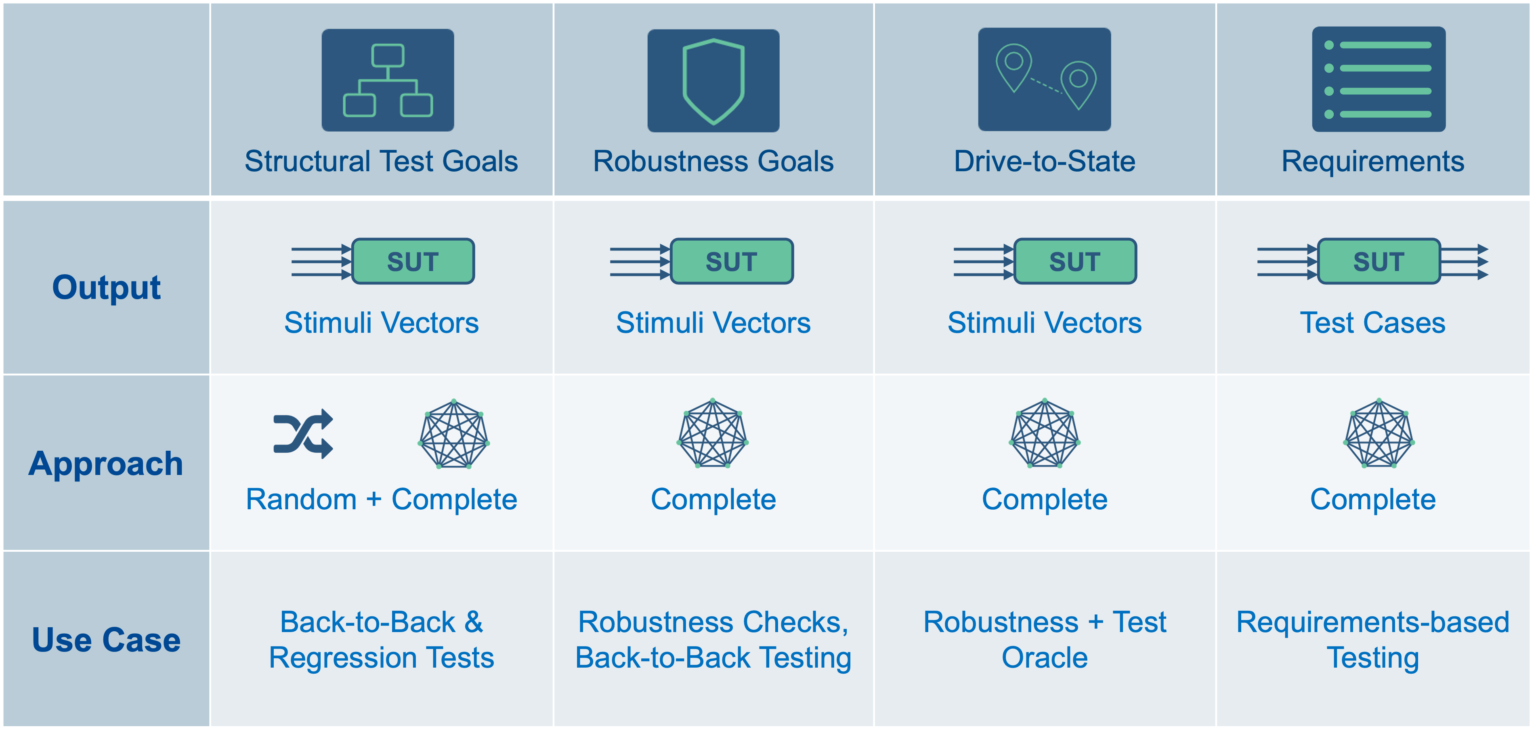How Automatic Test Case Generation is Revolutionizing Software Testing
In This blog
Automatic Test Case Generation utilizes artificial intelligence (AI) and machine learning (ML) algorithms to automate the creation of test cases. It empowers development teams to achieve continuous testing, a cornerstone of agile and DevOps methodologies. By automatically generating diverse test cases that explore a wide range of scenarios, Automatic Test Case Generation significantly enhances test coverage and efficiency, enabling earlier defect detection and faster feedback loops.
It also has several benefits, such as increased test coverage, improved efficiency, and earlier defect detection.
In the age of agile development and DevOps, ensuring software quality is no longer a separate phase but rather a continuous process that is a crucial part of the software development lifecycle (SDLC). So, can automatic test case generation help add value? And what are the benefits of using AI in testing?
This blog will unravel the answers to these questions by going deeper into the world of automatic test case generation, exploring its inner workings, impact on software quality, and current limitations. We’ll also explore the exciting potential this technology holds for the future of software testing.

How Automatic Test Case Generation Works: Techniques and Algorithms Used
Let’s start by understanding how automatic test case generation works.
Traditional software development methodologies often relied on a linear, phase-gated approach. Testing, for instance, was a distinct stage happening after development was complete. This approach led to bottlenecks, delayed feedback loops, and a higher risk of catching bugs late in the cycle.
DevOps and Agile methodologies heavily rely on automation throughout the entire SDLC, including testing. This includes automating test execution, deployment, and infrastructure provisioning.
In the 2023 State of Testing™ report, only 7% of companies mentioned not using any form of automatic test case generation tools for their testing phase. This wide adoption of test automation has to do with its multiple benefits:
- It can speed up the testing phase
- Ensure that multiple test scenarios are explored before the product is made live
- Identify bugs or code errors before they can be introduced into the main system
Thus, the benefits and high ROI of automatic test case generation tools make it lucrative for most organizations. It can reduce the effort required in the testing phase while simultaneously increasing the thoroughness and effectiveness of the testing process.
Here’s a peek under the hood to understand the techniques and algorithms powering automatic test case generation (ATCG):
1. Defining the Goal of Testing
The first step of any automatic test case generation starts by defining the goal of testing. This can involve several goals, such as:
-
Structural coverage goals: These include the statement, decision, and MD/DC coverage. These goals are defined based on the model or code that is being tested and define what needs to be covered in the test cases.
-
Robustness goals: These define the use cases and environments that the code or application needs to be tested for. If the conditions are deemed undesirable, they could impact the system’s robustness. Only when the code functions are on par with the expected levels can it be deployed.
-
Drive-to-State goals: These are user-defined goals that represent a specific state of the system under test (SUT). It helps us understand how the code or application will function in certain scenarios, the combinations that would create these states, and how to mitigate any risks when the system is in a critical state.
-
Requirements-based test cases: These are automatically generated test cases by the computer based on certain requirements or pre-defined instructions. It is also called a formal requirement because this test case has a clearly defined syntax and semantics, making them ideal for testing multiple scenarios.
Once the goal is defined, ATCG tools also need to be fed with information about the software being tested. This can include:
- Source code: Analyzing the code structure, control flow, and data dependencies helps identify potential paths and edge cases.
- Requirements and specifications: Understanding the intended functionality of the software guides ATCG tools in generating relevant test cases.
- User interface (UI) elements: ATCG tools can crawl through the UI to identify interactive elements and generate test cases for user interactions.
After this stage, the test case can be generated based on the inputs and requirements.

2. Techniques for Generating Test Cases
After the goal of ATCG is defined, we need to define the technique that can be used to generate test cases automatically. Here are some prominent ones:
-
Random Testing: This technique generates random inputs to explore different execution paths in the software. While effective for basic coverage, it might miss specific scenarios.
-
Complete Testing: The second method is called model checking or complete testing, which performs a complete analysis of the behavior of a system or a code against the pre-defined values. If the system behavior does not match the expected output, it will flag it as a violation and needs to be corrected or debugged before it is tested again.
-
Keyword-driven Testing: ATCG tools can identify keywords from requirements or code and generate test cases based on those keywords, ensuring relevant functionalities are covered.
-
State-machine-based Testing: This technique models the software’s behavior as a state machine, allowing ATCG tools to generate test cases that transition between different states and uncover potential state-related issues.
-
Search-based Testing: This advanced technique leverages algorithms like genetic algorithms to “search” for optimal test cases that achieve specific test coverage criteria.
3. Machine Learning & AI in ATCG
Once the goal of the test case is defined and the testing methodology is selected, we come to the final part. The future of ATCG lies in machine learning (ML). ML algorithms can learn from past test data and execution results to:
-
Prioritize Test Cases: Identify which test cases are more likely to uncover defects based on historical data.
-
Generate data-driven Tests: Automatically generate test data with specific characteristics to target specific functionalities or edge cases.
-
Self-learn and Adapt: As the software evolves, the ML algorithms can learn and adapt their test generation strategies for continuous improvement.
This forms the crucial and final stage for test case generation in software testing. Since the selection of the test case methodology and goals can have a significant impact on the final outcome, we need to follow a few Dos and Don’ts in test automation. This ensures that the AI algorithm can be properly leveraged in automatic test case generation and make the entire process efficient.
Current Limitations and Challenges of Automatic Test Case Generation
Test case generation may seem simple, but it involves exploring multiple scenarios and use cases. When using machine learning in the mix, the model needs to be fed multiple scenarios and test cases to ensure that it can understand specific requirements and define test cases based on them. However, this comes with its own set of challenges, such as:
1. Limited Context Understanding
ATCG tools primarily rely on analyzing the software itself and might struggle to understand the broader context, including user intent, business logic, and non-functional requirements. This can lead to generating irrelevant or redundant test cases.
2. Handling Complex Logic and Interactions
Software applications often involve intricate logic and interactions between different components. ATCG tools might struggle to fully grasp these complexities, potentially missing critical edge cases or scenarios requiring specific user behavior.
3. False Positives and Negatives
Due to their automated nature, ATCG tools can sometimes generate test cases that trigger false positives (identifying non-existent issues) or false negatives (missing actual defects). This necessitates human intervention to analyze and validate the generated test cases.
4. Maintenance and Expertise
ATCG tools require ongoing maintenance and updates to adapt to evolving software and testing needs. Additionally, effectively utilizing these tools might require specific expertise in test automation and ATCG principles.
5. Security Testing Limitations
While ATCG can improve functional testing, it might not be as effective in uncovering security vulnerabilities that often require specific security expertise and tools.
While these limitations can impact the quality of the output and limit the use of automatic test case generation for some scenarios, it is only evolving and becoming better. Researchers are actively developing new techniques and algorithms to address these challenges.
Plus, with more organizations embracing AI and ML in their day-to-day activities, it holds immense potential for enhancing context understanding, self-learning capabilities, and overall test case effectiveness.
The Impact of Automatic Test Case Generation on Software Quality
Integrating automatic test case generation into the software development lifecycle (SDLC) brings many benefits that directly impact the quality of the final product. Here’s how ATCG is revolutionizing software testing:
1. Increased Test Coverage
Manual test case creation can be time-consuming and often focuses on well-trodden paths. ATCG tools, on the other hand, can explore a vast array of scenarios, including edge cases and complex interactions, leading to significantly higher test coverage.
2. Improved Efficiency and Reduced Costs
ATCG automates a repetitive and time-consuming task, freeing up valuable tester resources for more strategic testing activities. This translates to faster testing cycles, reduced testing costs, and increased team productivity.
3. Early Defect Detection
By covering a more comprehensive range of scenarios, ATCG tools are more likely to uncover defects earlier in development. This allows for quicker bug fixes and prevents defects from propagating to later stages, saving time and resources.
4. Continuous Integration and Delivery (CI/CD) Friendly
The automated nature of ATCG aligns perfectly with CI/CD pipelines. Test cases can be automatically generated and executed with each code commit, ensuring continuous quality monitoring and feedback throughout development.
5. Improved Software Reliability
With more comprehensive test coverage and earlier defect detection, ATCG contributes to the delivery of more robust and reliable software. This translates to a better user experience and fewer post-release issues.
Conclusion
This blog is only the starting point for your journey with automatic testing and exploring the world of testing automation. This innovative technology offers a compelling solution to time-consuming manual testing, limited coverage, and early defect detection challenges.
While automatic test case generation tools have limitations, ongoing AI and machine learning advancements promise a future filled with even more sophisticated and effective test case generation.
By leveraging it correctly, software development teams can significantly improve software quality, leading to a more competitive edge and a superior user experience.























